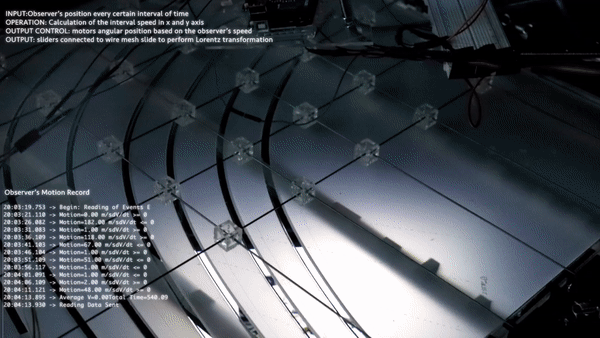Δ(x, y, z, t) , 2020
1100 x 1100 x 600 mm
aluminium, steel, DCmotors, PVC, projectors, custom electronics
Δ(x, y, z, t) is an interactive interface based on the Lorentz Transformation concept. It is a project developed as part of the long-term architecture project.
An observer’s motion through space directly impacts how fast their clock ticks- hence, the clock walking ticks slower than the observer at rest. The reading of an event or the space-time coordinate depends on which coordinate you are sitting in this block universe, just like you perceive different spatial sides of an object depending on where you view the object from in a three-dimensional world.
The sliders control the ‘map’ of space-time as positioned on all four sides of the interface. The sliders slide and represent the instantaneous reading of space-time of the current observer watching the projected footage. The project's objective is to translate one of the concepts from theoretical physics into a more poetic experience. A short video displaying a person waking up from bed’ is played in sequence until someone steps into the defined zone of the interface. Based on where and how fast the user is walking past the interface, the sequence of the video is altered. Therefore, the video sequenced watched is unique to the person’s motions in the space. As the sequence alters, the sliders on the interface slide slowly adjust themselves to mark the space-time coordinate of the user relative to the ‘absolute world line’- the diagonal line that goes across the rectangle. The process happens in real-time as the person adjusts their speed and position in space.
The perception of the video and the immersive lighting experience in the space is unique to each participant of the interface.
diagram
841 x 1188 mm
exploded axo drawing
841 xx 1188 mm









